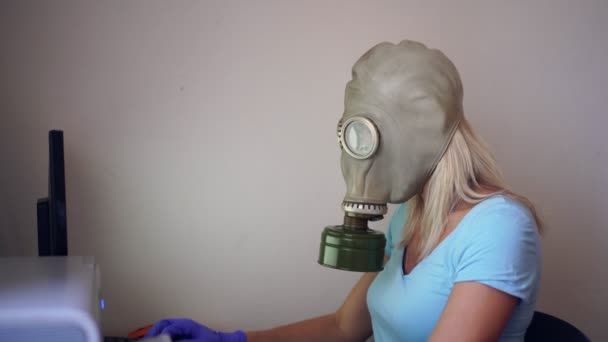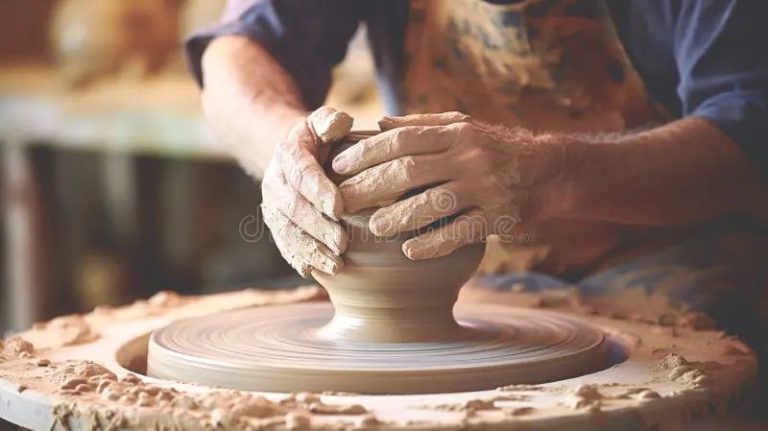Who Built Belle Isle Conservatory?
Introduce Belle Isle Conservatory
The Belle Isle Conservatory is a historic conservatory located in the 1,025-acre Belle Isle Park on an island in the Detroit River between the United States and Canada. Belle Isle Park, originally known as Belle Isle, is the largest public island park in the United States and has a rich history dating back to the early 1800s when it was first settled by French colonists (Belle Isle Park).
The Conservatory was built in 1904 and designed by notable Detroit architect Albert Kahn in the Victorian glasshouse style. It features a stunning domed central pavilion flanked by two curved and elongated wings. The historic conservatory houses lush exotic plants from around the world and is a popular destination for visitors to Belle Isle Park (Belle Isle Conservatory).
Detroit’s Growth in the Late 1800s
Starting in the late 1800s, Detroit experienced tremendous economic growth and became one of the largest industrial centers in America (https://apps.detroithistorical.org/buildingdetroit/curriculum_industrial.php). The city’s location along the Detroit River and the Great Lakes allowed it to develop into a major hub for shipping raw materials and finished goods. Industries like copper smelting, pharmaceuticals, stove manufacturing, shipbuilding, and tobacco took off in Detroit, employing thousands of workers.
With the booming economy came rapid population growth. Detroit’s population exploded from around 45,000 in 1870 to over 285,000 by 1900, with many immigrants arriving from Europe to find work. As Detroit grew into a major metropolis, wealthy industrialists and business leaders emerged, including stove manufacturer David Whitney Jr. and lumber baron David Gray.
These Gilded Age tycoons used their fortunes to fund civic institutions and cultural amenities, fueling a rise in philanthropy. Their charitable giving and activism helped shape Detroit’s development through institutions like the Detroit Public Library, the Detroit Institute of Arts, and Wayne State University (https://en.wikipedia.org/wiki/History_of_Detroit). The economic might and philanthropy transforming Detroit in the late 1800s paved the way for even greater growth in the new century.
Plans for a Conservatory
As Detroit’s population grew rapidly in the late 1800s, city leaders envisioned creating a large urban park and cultural attraction to rival parks in other major cities. According to the Belle Isle Conservancy, there were initial plans to build a conservatory as early as 1879, when landscape designer Frederick Law Olmsted created plans for Belle Isle Park (https://www.belleisleconservancy.org/).
In 1881, the Detroit Park Commission officially decided to build a conservatory and palm house. They hired architect Albert Kahn to design the building in 1902. However, those plans were put on hold due to budget constraints. It wasn’t until 1904 that the Commission finally approved funding and held a design competition to choose an architect for the conservatory.
Picking a Design

After the decision to build a conservatory, the City of Detroit put out a request for architectural designs in 1902. According to Wikipedia, the city received a dozen submissions, with the winning design coming from the architecture firm of George D. Mason and Albert Kahn. Mason and Kahn were an up-and-coming firm in Detroit at the time, having already designed several significant buildings in the city.
According to the Belle Isle Conservancy, Mason and Kahn’s design was chosen for its Beaux-Arts classical style, which was popular for public buildings in America at the turn of the 20th century. Their design featured a central dome flanked by two wings, one housing an aquatic garden and the other housing a palm house. The conservatory was designed to showcase both tropical and arid plants in lush garden settings for the public to enjoy.
The Winning Design
In 1902, the City of Detroit held a design competition for the new conservatory planned for Belle Isle. Architect Albert Kahn submitted the winning design in partnership with architect George Mason. Kahn’s design featured a central palm house flanked by two long and narrow pavilions. His innovative use of steel framing and glass panes allowed maximum light into the conservatory.
Kahn’s winning design called for the Palm House to be the central showpiece of the structure. It featured a towering steel framed dome with glass panes to let in sunlight. The Palm House would contain tropical plants including palm trees, ferns, orchids, and other exotic flora. On either side of the Palm House, Kahn designed long rectangular pavilions with glass roofs supported by steel trusses. These pavilions provided space to display more temperate plants.
The layout of the building maximized natural lighting throughout while also allowing consideration for the different temperature and humidity needs of tropical versus temperate plants. Kahn’s innovative use of steel and glass construction was ahead of its time and allowed for a bright, spacious conservatory filled with diverse botanical specimens.
Construction
The construction of the Belle Isle Conservatory began in early 1903 and was completed later that same year at a cost of $100,000 (equivalent to around $3 million today). The building materials included steel, glass, and marble. Albert Kahn served as the supervising architect for the project.
Construction started first on the central dome, which reached 60 feet high and spanned 60 feet in diameter. The dome consisted of a framework of steel tubes that supported the glass panes. Over 16,000 panes of glass were used in the dome alone. The marble walls and floors were also installed during the initial construction phase.
By August 1903, the Conservatory structure was nearly complete, and construction crews began installing the heating, plumbing, and electrical systems. The boilers and coal-fired furnaces that provided heat and humidity control were located in a separate boiler room connected to the main building.
In the final weeks before the opening in September 1903, crews completed the interior landscaping, adding soil and installing the initial tropical plants and palm trees. The construction process was relatively quick and efficient, allowing the Conservatory to open on time after just 8 months of building.
Opening and Early Years
The Belle Isle Conservatory had its grand opening on August 18, 1904, the same day as the neighboring Belle Isle Aquarium https://historicdetroit.org/buildings/anna-scripps-whitcomb-conservatory. Both structures were designed by architect Albert Kahn and commissioned by Detroit mayor Hazen Pingree as part of an effort to beautify Belle Isle Park. The conservatory, originally known as the Horticultural Building, cost $100,000 to construct.
During the early years after its opening, the Conservatory was filled with lush exotic plants from around the world. It became a popular spot for visitors to Belle Isle to take a stroll through the palm house and see rare flowers and plants. The Conservatory also held flower shows for the public featuring floral arrangements and prize-winning plants. Even in the frigid Michigan winters, the Conservatory provided a warm, tropical oasis for Detroit residents. It established itself as an iconic landmark and point of civic pride early on in its existence.
Renovations and Restorations
The conservatory has undergone several major renovation and restoration projects over the years to maintain the historic structure. In the 1980s, the DNR completed a $4.2 million renovation that repaired the glass dome and replaced deteriorated steel supports.[1] In the 1990s, funds from a millage helped restore the palm house gallery.[2]
In 2022, the Belle Isle Conservancy announced plans for a major $10 million renovation to repair the deteriorating glass dome structure. The project will require closing the conservatory for over a year while contractors fully restore the dome’s steel and glass.[1] The work began in early 2023 and is expected to be completed in 2024.[2] This project will protect the historic conservatory and its plant collection for generations to come.
Recent History
The Belle Isle Conservatory has continued to operate as a beloved public attraction in recent decades. In 2000, the city of Detroit was facing budget cuts and considered closing the Conservatory, but public outcry led the city to keep it open (source). The Conservatory briefly closed in 2002 for renovations before reopening later that year.
In 2012, operational control of Belle Isle was transferred to the State of Michigan. The Michigan Department of Natural Resources (DNR) took over management of the Conservatory. In recent years, the DNR has invested in restoration projects to maintain the aging facility. In November 2022, the Conservatory closed for a major $10 million renovation of the glass dome and other structural repairs, with plans to reopen in 2024 (source). While the building is closed, the outdoor gardens remain open to the public.
Today the Belle Isle Conservatory continues its mission of educating visitors about plant species from around the world, maintaining a beloved historic landmark, and providing a beautiful oasis for the community to enjoy.
Significance as a Historic Landmark
The Belle Isle Conservatory has great historic significance for Detroit and stands as an architectural legacy from the city’s past. The Conservatory was designed by renowned architect Albert Kahn and opened in 1904, representing Detroit’s growth and prosperity during the late 19th and early 20th centuries.
As noted by the Belle Isle Conservatory Wikipedia page, the building was designated a Michigan State Historic Site in 1958 and listed on the National Register of Historic Places in 1972. It is one of the oldest conservatories in the United States and an iconic landmark on Belle Isle.
According to the Belle Isle Conservancy, the Conservatory has great architectural significance as an example of Victorian greenhouse design. Its domed central pavilion and long wings create an impressive presence along with beautiful interior details.
As stated by the Conservancy, “The building’s elegant beauty echoes Detroit’s days as an economic powerhouse and world industrial leader.” The Conservatory represents an important part of the city’s history and remains a cherished institution.






